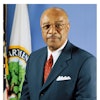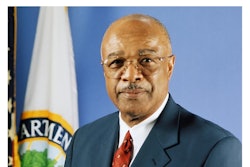 Dr. J. Luke Wood, vice president for student affairs and campus diversity, chief diversity officer, and Dean’s Distinguished Professor of Education at San Diego State University.
Dr. J. Luke Wood, vice president for student affairs and campus diversity, chief diversity officer, and Dean’s Distinguished Professor of Education at San Diego State University.
“I knew to put it in the ‘Racism Box,’ and knew that I wasn’t inviting them to my birthday party,” said Wood. “But as I got older, [those epithets] became more subtle—dismissive looks and put-downs. I didn’t know what to do with that.”
That haziness and confusion is called “attribution ambiguity” and is intrinsically connected with “racelighting,” a term developed by Wood and his colleague at San Diego State University (SDSU), Dr. Frank Harris III, to describe the way in which people of color are, through macro and microaggressions, encouraged to question their own value and lived experiences with racism.
Wood, vice president for student affairs and campus diversity, chief diversity officer, and Dean’s Distinguished Professor of Education at SDSU, discussed the idea of racelighting at the University of Phoenix’s Inclusive Leadership Summit on Thursday. The event was co-sponsored by Diverse and the Educational Testing Service (ETS).
Wood shared how racelighting impacts Black, Indigenous, and People of Color (BIPOC) employees and students and provided suggestions on how institutions can better protect these individuals.
Racelighting is derived from ‘gaslighting,’ which comes from the 1938 play Gas Light by Patrick Hamilton. In the story, Jack terrorizes his wife Bella by changing the environment she lives in. When she mentions these changes to Jack, he purposefully manipulates her by telling her she’s imagining things.
Gaslighting is more commonly understood to relate to abusive relationships between a man and a woman but has more recently been broadened to connect with other forms of marginality.
















